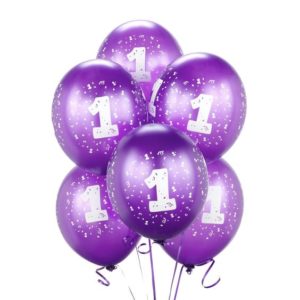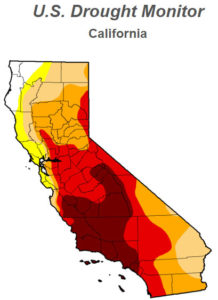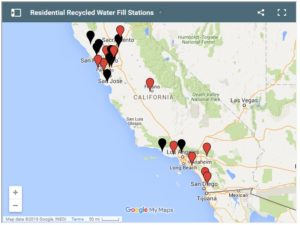
RecycledH2O born April 9, 2015
When I first started this blog, I just wanted to get information about residential recycled water fill stations out in the public. Little did I know it would grow and expand into a name in the industry. In the past year I’ve written over 100 articles, been mentioned by name in five articles that have reached millions internationally. I’ve met people across the state, country and world – we all share the same passion. Water.
April 9th, 2016 marked our one year anniversary.
Since then, residential recycled water fill stations have expanded to 25 in California, “89% of Californians agree that the drought has made them more supportive of recycled water“, and we’re off to the races when it comes to expanding our reach. All of this couldn’t have been made possible without your continued support. Thank you for reading, thank you for sharing. Keep it up!
Here is the April 2016 content roll-up.
Articles
OPINION: Declare Drought Over – with a catch
Wrote a letter to California Governor Jerry Brown with a simple idea – winter rains weren’t as plentiful as expected and reservoirs are full. The U.S. Drought Monitor map of California has greatly improved, but much of the state is still in a drought. In an effort to congratulate homeowners that removed their water hungry lawns, the proposal was to remove their water use restrictions, where as those still with lawns in the front yard continued with fines and shaming.
Winter Rains Didn’t Stop NorCal Recycled Water Haulers
Think of it as a beginning of spring fill station update. Received data from City of Brentwood, Central Contra Costa Sanitary District and Dublin San Ramon Services District on their recycled water fill station activity. Between the three, over 350,000 gallons of recycled water were dispensed to residential haulers.
Residential Recycled Water Fill Stations are not the only way these agencies distribute recycled water. All of them have pipelines to their communities providing recycled water to parks, street medians and businesses. Recycled water use is very prevalent in the area, definitely something we should encourage expansion of.
I am interested in seeing how their stats will increase in the summer ahead.
Recycled Water Hauling Essentials
If you’re new to recycled water hauling, I put together the three things you need to haul water. Find your vehicle, determine how much weight you can haul – this then determines tank size. Then comes unloading once home – usually by way of pumps and onto your lawn/garden.
- Vehicle to transport recycled water with.
- Container used to haul, pumps hoses and lawn sprinklers to distribute.
- Motivation! It takes time and energy.
Statewide Fill Station Status
As summer approaches, it was time to update our map and find new stations opening. This blog tracks their activity, location and hours of operation. Lots of stations that closed for winter were still deciding on whether to re-open again. While some are still out to lunch, most have made the decision to open for at least one day a while while others are ramping up their efforts to reduce wait times and extend hours of operation.
It was in this post where Delta Diablo shared their re-opening news with the blog. Their first day of operation for 2016 was on April 30, 2016 at 9:00AM. Welcome back Delta Diablo, we’re looking forward to sharing your excitement around recycled water this summer.
We also welcome the newest fill station – City of Ventura. They’ve submitted their application to the state and are waiting on approval. Once they have it, we’ll update accordingly.
It’s All About Perspective
Do you really know where your water comes from? Do you really know whats in it? It tastes good, generally. Direct Potable Reuse is a process where recycled water is treated to levels much cleaner than that bottle of water you have on your desk. The only problem, the state has yet to provide regulations to allow it to be used as a drinking water supply. This is coming, slowly. The state wants to ensure any if’s, and’s or but’s are answered.
I attended a conference where this was discussed and someone asked a very pertinent question.
Social Media
-
Facebook.com/RecycledH2O – Like us on Facebook!
Top post –
- @RecycledH20 – Follow us on Twitter @RecycledH20
Top post –
#cadrought still in effect. What do you need to haul #recycledwater?https://t.co/AUhgRFbzuD #CleanWaterWednesday pic.twitter.com/vJiN6jd1c6
— Recycled H2O (@recycledh20) April 20, 2016







Leave a Reply